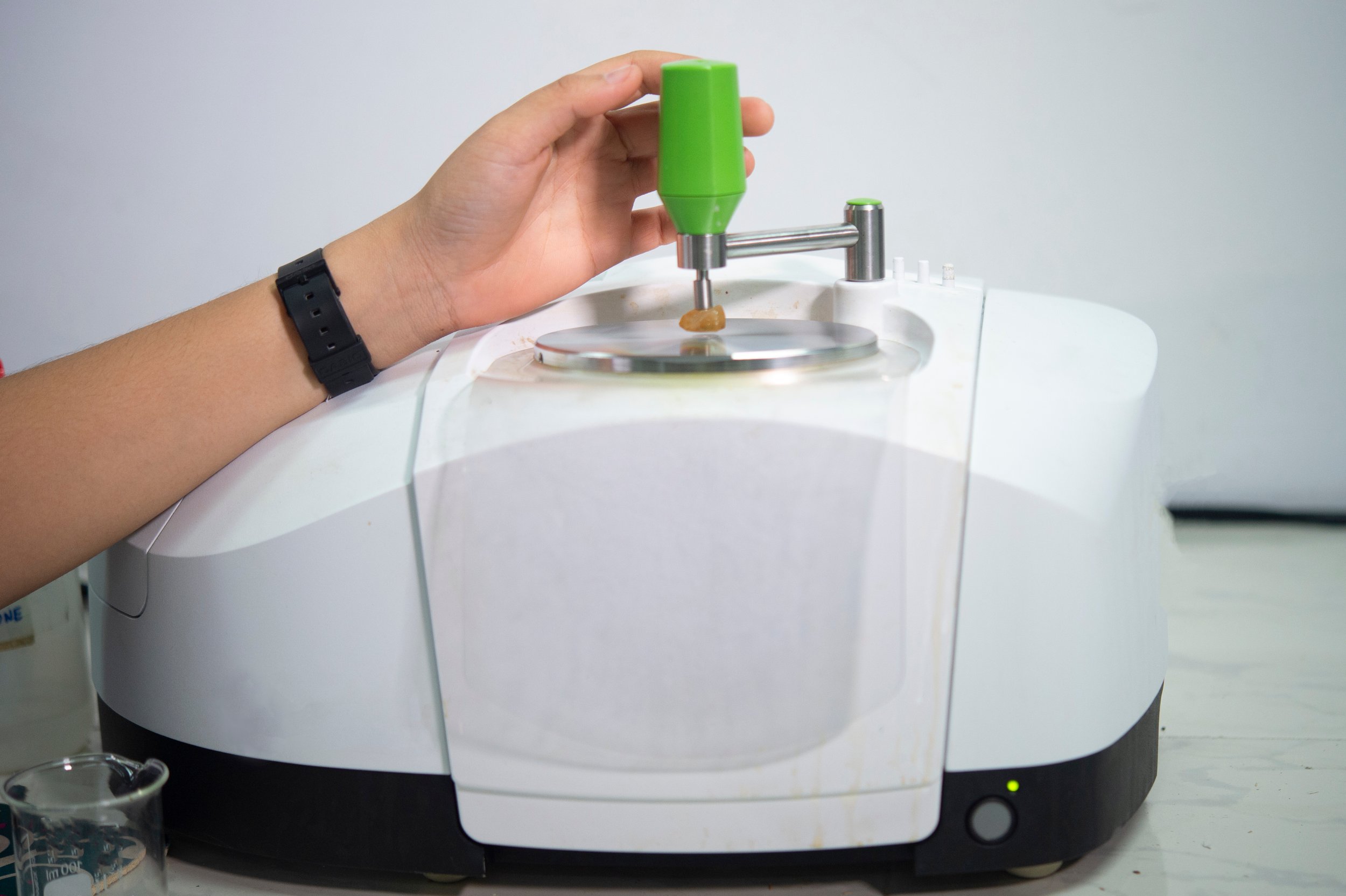identification of polymers and organic contaminants VIA FTIR ANALYSIS
FTIR analysis
MES provides FTIR analysis for the identification of organic (carbon based) materials and the characterization of organic contaminants by Fourier Transform Infrared Spectroscopy (FTIR) and Micro FTIR. FTIR analysis is a reliable and cost-effective analytical tool for identification of polymers, adhesives, paints, and fibers. FTIR analysis utilizes infrared light in the mid-infrared region to produce a distinctive “organic fingerprint” that can be used to easily identify an organic material or compare to a known good.
FTIR ANALYSIS LAB
Located in Dallas, MES has a complete materials test laboratory staffed with graduate level materials engineers to supervise all analytical projects. FTIR analysis is conducted in our modern chemical analysis lab. Our full-service test lab offers rapid test results at an affordable price. As an A2LA ISO 17025 accredited lab, quality is our focus.
FTIR ANALYSIS PROCESS
FTIR analysis samples may be submitted as solids, liquids, or gases, typically using glass sample jars or paper envelopes. The samples may be further processed for testing, as needed.
Infrared spectroscopy uses the fact that molecules have specific frequencies at which they rotate or vibrate corresponding to energy levels. FTIR uses an infrared radiation (IR) beam to modulate the wavelength of light of an IR beam directed through the sample. The beam can also be reflected off opaque samples in a process known as attenuated total reflection (ATR).
FTIR ANALYSIS REPORTS
The FTIR Spectrometer generates a graph in the form of reflectance or absorbance bands versus wavenumber. Specific functional groups are represented by the absorbance of certain wavelengths of the IR beam on a spectral graph. By comparing the resulting spectrum to a database of over 20,000 organic compounds, our staff chemists can quickly identify the matching chemical compound. Interpretation of the FTIR spectra, as well as close database matches are presented in each report.
CAPABILITIES
Identification of organic (carbon base) materials
Characterization of contaminants
Proven extraction techniques
Attenuated Total Reflection (ATR) fixture
Micro FTIR for particles
Grazing Angle Reflection fixture
Gas collection tube
SPECIFICATIONS
ASTM E168 - Infrared Spectroscopy
ASTM E1252 - Qualitative Infrared Analysis
SAMPLE REQUIREMENTS
Particles down to 5 mil diameter
Pea sized sample for ATR



